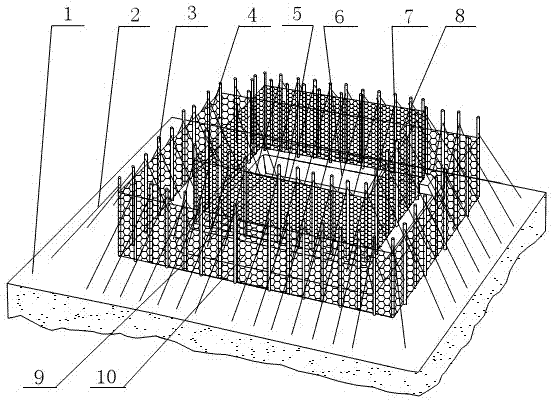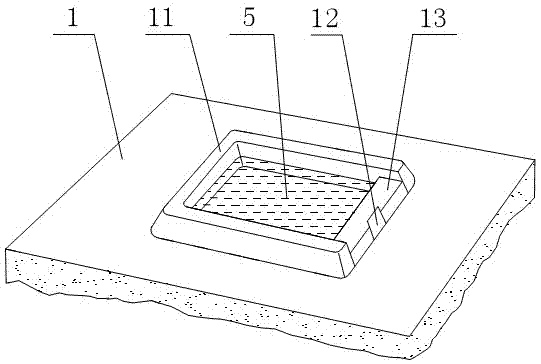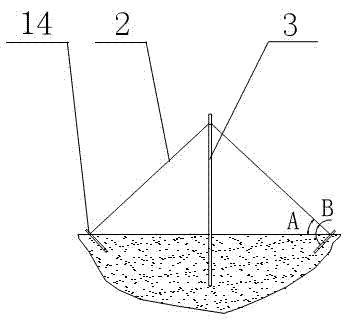Tidal flat low-dam high-net ecological aquaculture typhoon-resistant facility
A technology of ecological breeding and tidal flats, which is applied in the field of anti-typhoon facilities for ecological breeding with low dams and high nets in tidal flats. It can solve the problems of destructive damage to farmers, high production costs, and long laying, and achieves small deformation, low production costs, and enhanced The effect of typhoon defense ability
- Summary
- Abstract
- Description
- Claims
- Application Information
AI Technical Summary
Problems solved by technology
Method used
Image
Examples
Embodiment Construction
[0018] Embodiments of the present invention will be further described below in conjunction with the accompanying drawings.
[0019] Bar 7, outer bar 3 are general moso bamboo poles commonly used, and the moso bamboo pole of 3~9 meters is selected for use according to the altitude above sea level of tidal flat. The number of rods and outer rods is determined by the size of the seawall.
[0020] The poles and outer poles are arranged in the same inner and outer rows evenly and misplaced, and the roots of each pole and outer pole are buried in the tidal flat 1 about 1.5 meters, of which 0.8 to 1 meter is the height of the seawall 5, adjacent The distance C between the two rods and the outer rods is 1 to 1.5 meters.
[0021] Fix the upper ends of two ropes 6 and 2 at the bamboo joints on the upper ends of each pole 7 and outer pole 3 respectively. The angle A between the rope 6 and the outer rope 2 and the ground is 40-45 degrees. 6. The ends of the outer rope 2 are respectively...
PUM
 Login to View More
Login to View More Abstract
Description
Claims
Application Information
 Login to View More
Login to View More - R&D
- Intellectual Property
- Life Sciences
- Materials
- Tech Scout
- Unparalleled Data Quality
- Higher Quality Content
- 60% Fewer Hallucinations
Browse by: Latest US Patents, China's latest patents, Technical Efficacy Thesaurus, Application Domain, Technology Topic, Popular Technical Reports.
© 2025 PatSnap. All rights reserved.Legal|Privacy policy|Modern Slavery Act Transparency Statement|Sitemap|About US| Contact US: help@patsnap.com



